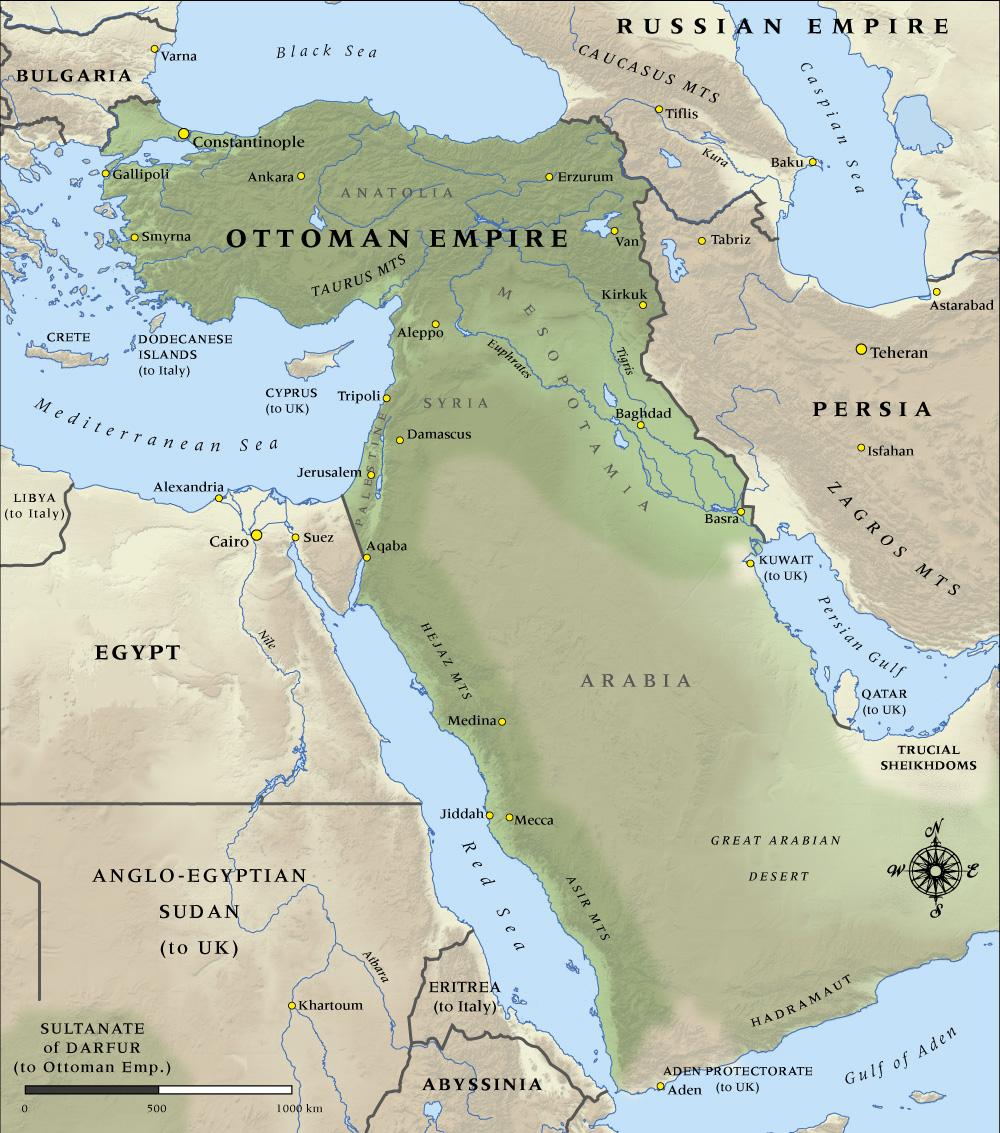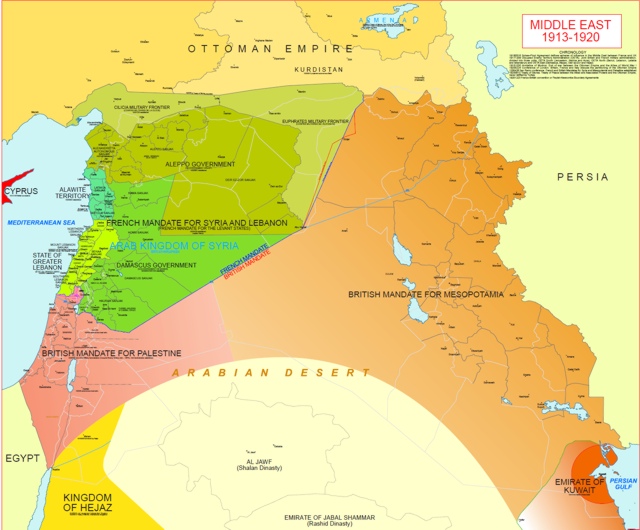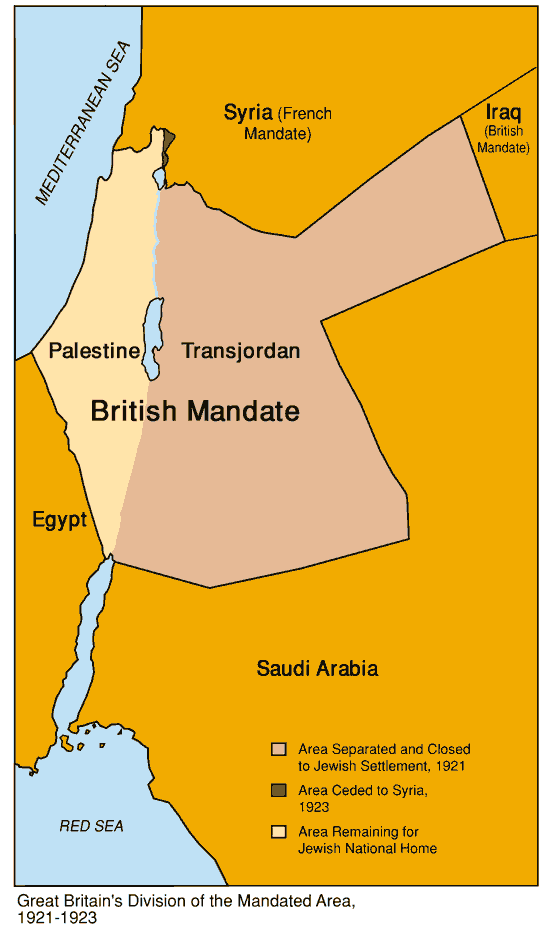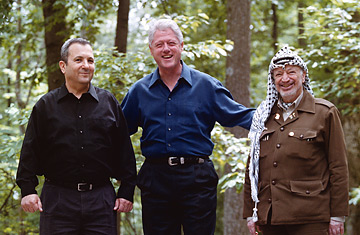Today Gaza is in the epicenter of all news and all the world and his wife is writing about this tiny piece of land. But if one asks the average paper-reader or news-consumer in the West: "ok, so where did all these Palestinians came from and how did the problem started and when?" few will be able to answer. Most answers will probably be ideological, some will refer to some occupation, even more to conflict with Israel but almost nobody will be able to answer since when is Rafah a border town, when did Israel first took Gaza, where was it before and how was it managed before Hamas.
Do you want to dive into this fascinating story?
Do you recognize the famous site above? The picture is from the collection of the museum in Auckland, New Zealand.
If not, don't worry. Few of the people knowing it well today would have recognized it. This is Rafah crossing. And it is the oldest picture of it I could find, yet still done 11 years after Rafah became an international crossing.
Gaza is a very old settlement, which we know from the Bible and archeology. Archeology puts the oldest settlements in Gaza at about 5,000 years. Bible tells us this is the place where king David conquered Goliath and Samson took the door to Gaza back with him (which did not prevent him from suffering horrible fate later). This was part of the corridor between Africa and Asia, Egypt and Babylonia, one of the highways of the ancient world. It was settled, according to the Bible by Philistines, enemies of Israel, and the very name Palestine derives from this name of Israel adversaries and was invented by Romans to humiliate Israelites after collapse of the Bar-Kochba uprising against Rome in 135.
Yet today we are preoccupied with you contemporary history of this place so let me start in 1906 when Rafah became the international border town.
This was the border between two empires: British, which at the time held the Egypt and all-the-most-important Suez Canal, and Ottoman, which among its vast territories held what later became Syria, Jordan, Lebanon, Israel and so called Palestinian territories, Gaza included. The arbitrary drawn border was following straight line from Rafah to Taba and disregarded any peoples or cultures native to the region. Not that there were many, it was mostly unoccupied desert with few bigger settlements.

Above you may see the map of Ottoman empire before the I world war, and however it already lost some of it territories: Romania, Bulgaria (to great extend), Serbia, Montenegro, parts of Tunisia etc. it was still a vast territory. All the historical Israeli territories were just a very distant province. Yet in Rafah it bordered the biggest empire of the time, the one on which sun never set. The border was peaceful for the next 11 years. However as a consequence of I world war, which Ottoman Empire joined on the side of Central States, while the UK on the side of Entente Cordial, the map changed drastically. This war brought end to 4 empires and Ottoman was one of them.

This is a map of Middle East around 1920 with British mandate for Palestine, French mandate for Syria and Lebanon, British mandate for Mesopotamia and so on.... Both British and French promised autonomy and states to various peoples at various pieces of this land. Often the territories overlapped. There were plans to create Kurdistan that were never realized. The piece of land important for the future Gaza (and Israeli and Jordan and Palestinian) history was all under the British mandate for Palestine. In 1917 British promised this land to Jews. That did not stop them from making promises to Arabs. Both nations wanted the whole territory of Mandate. Here's how it looked:

In 1921 British divided mandate giving a small part to Syria, some 80% to Transjordan - independent kingdom connected to British where the throne was offered to King Abdullah, brother of Iraqi king Faysal. Jews, disappointed in the division, as they were forbidden to live in Transjordan were promised remaining 20% of the mandate. Yet British very well knew how to rule their territories and were talking with Jews behind Arab backs and with Arabs behind Jewish backs.
As for Gaza, when you compare this map with a contemporary one, you realize that it was well inside the British mandate, yet still close to border with Rafah remaining a border town, since Egypt gained its independence in 1922. The conflict between Jews and Arabs grew in the mandate, with both sides increasingly hostile to each other and to British. After the II world war British were not able to hold to it any longer and signaled that they want UN to divide the land. Nevertheless the last colonial power to hold these land was UK.
Disregarding the 1921 division of the mandate, which gave Arabs 80% of it UN in its 1947 resolution proposed further division of the remaining part. This is UN's proposition:
The plan, though neither side was happy, was accepted by Jews, desperately needing a state to bring the Holocaust survivors and release interned by British authorities so called illegal immigrants, and refused by Arabs. 24 hours after declaration of independence Israel was attacked by 6 Arab armies and the war of independence started. It ceased (only with demarcation lines, not real borders as no Arab state recognized Israel at the time) in January 1949.
These were Israeli armistice lines. Not so different from the proposed division, although in the north gains were spectacular. Gaza strip, as the piece of land became known, belonged to Egypt, and armistice lines originally were just ditches dug in the sand. However it's demography changed. Before the war of independence Gaza strip had approximately 100,000 inhabitants, afterwards approximately 400,000.

Gaza belonged to Egypt and there were frequent exchanges of fire across armistice lines, however they were still just ditches. On the borders on Israeli side were few military outposts and few kibbutzim. Nahal Oz, the kibbutz now known as one of the primer victims of October 7, was established in 1953 from the scratch by a group of 19-year-olds. Fedayeens (terrorists from Gaza) often penetrated Israel and kibuzniks tried to patrol the fields. Some of the Palestinians coming from Gaza wanted to reach their old houses or fields, which was tragic aftermath of the changes caused by war. Others were thinking about attacking any Israelis. In 1956 Roi Rothberg was killed from ambush, and his body carried back to Gaza and mutilated . Sounds familiar?
In 1956, after the war with Egypt, Israel gained Gaza and Sinai Peninsula for the first time but returned them in 1957 to Egypt. The next decade was relatively quiet.
As a consequence of 6-day-war Israel gained again the Gaza and Sinai Peninsula. Acting on advice from Moshe Dayan Israeli government tried to keep the border between Gaza and Israel open. At first it worked. Gazans were able to work in Israel and even small Israeli salary was quite hefty in Gaza. Israelis from kibbutzim near Gaza were going shopping to the strip and were enjoying beaches, one of the most beautiful Mediterranean beaches there are. Many Gazans worked in kibbutzim, people started making friendships, it looked fine. In 1968, right after the war the remuneration received by Gazans working in Israel constituted 2% of the Gaza's budget, in 1975 already 31 % (and in the meantime there was Yom Kippur war). However the Yom Kippur war, comparison between conditions in Gaza and in Israel and fedayeens were stretching relationships. When in 1979 Egypt and Israel made a peace treaty in Camp David Egypt very much wanted to regain control over Sinai Peninsula but refused to accept Gaza. Below are two fragments of contemporary Egyptian voices:
"Egypt never annexed Gaza like Jordan did with the West Bank. Yes
we held a certain degree of de facto control after the 1948 war but we
established Gaza as first a headquarters for a Quasi-Palestinian
government which was later dissolved by Nasser. If the United Arab
Republic had ever succeeded it would have been part of a Palestinian
state within the Republic and not part of Egypt.
So in short Gaza was never planned to be part of Egypt whether by the Monarchy, Nasser or Sadat.
Palestinians living in Gaza (...) did not see themselves as
Egyptians and Egyptians did not consider them as such"
"Gaza
was run by Egypt but Sadat was a genius because probably realizing what
governing it would entail he “returned” it to Israel as part of the
peace deal.
Not
his country’s problem anymore is it? So Egypt got their sovereign lands
back, got rid of Gaza, and had enjoyed 43 years of peace with Israel
and all the benefits associated with a lack of a war with a neighbor.
As an Egyptian I’d probably be praying to Sadat cause he paid with his life for it.
The
main issue though is that even if Egypt begins administering Gaza,
unless they come down hard on terror groups (Hamas, Islamic Jihad) which
may alienate their local populations in Cairo, when Hamas shoots their
next volley into Israel… does Israel blame Egypt? Do they declare war on
Egypt? If they enter Gaza and confront Egyptian soldiers who have to
administer and defend the territory are we risking war between Egypt and
Israel?
Why
would Egypt want to be responsible for this? They have their hands full
with building a new Cairo or something 🤣 plus all those pyramids
Jewish slaves (edit: joke ) built are mobbed by tourists.
Egypt got enough problems".
Other problems, political, social and humanitarian started to evolve during early 70s and continued to grow: growing terrorism of Gazans, military abuse by Israel in early 70s, first Israeli settlements in Gaza and division on both sides with regards to values and approaches, mostly between religious and secular. These factors complicated the story. Maybe if Israel wasn't so self assured after 6-days war and so enraged and spooked after Yom Kippur war... maybe if Muslim Brotherhood and radical Islam wouldn't found their way to Gaza... Maybe if not Begin with Likud but Holds Meir with socialist secular party was a PM during Camp David... Maybe if fedayeen were opposed by Gazans while there was a chance... The history is full of maybes.
Please let me know what you think and what would you like me to continue with.










